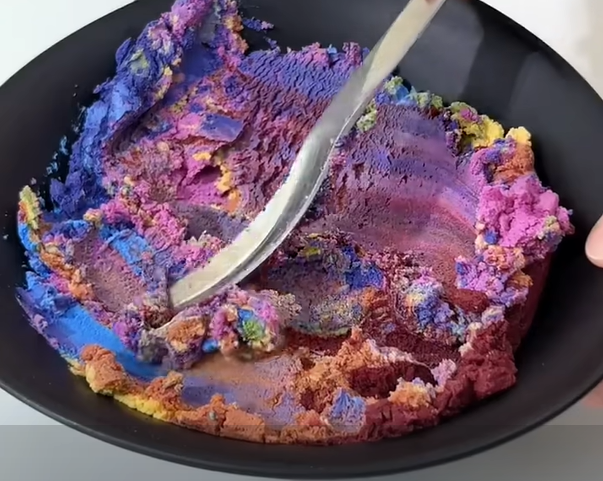A new food trend is taking social media by storm: “Dry Yogurt” – a dehydrated yogurt that becomes thick, spreadable, and even snackable. This innovative take on a traditional food has gone viral on TikTok, particularly among Gen Z. But what’s behind the hype, and does it have the potential to make a lasting impact on the food industry?
The Origins of the Trend
The technique of draining yogurt to create a thicker, more spreadable consistency is not new. In the Middle East, “Labneh” – a strained yogurt cheese – has been a staple for centuries. Similarly, in Central Asia, dried yogurt forms like “Kurut” have long been used as portable, high-protein snacks.
However, in late 2024, Gen Z rediscovered this ancient method—with a creative twist. Influencers like @missbedhead and @msshiandmrhe started sharing videos showing how to drain yogurt using cheesecloth or even kitchen paper, transforming it into a moldable consistency. The most viral variations include cutting the thickened yogurt into bars, topping it with nuts and fruit, or turning it into crispy chips. The hashtag #DryYogurt quickly amassed millions of views.
What Makes Dry Yogurt Special?
The appeal of this trend lies in its unique texture. While traditional yogurt is creamy and eaten with a spoon, dry yogurt has a consistency similar to cream cheese or fudge—it can be sliced, spread, or even eaten like a snack. Many TikTok users describe an amusing “visual illusion”: the product looks like a pastry or cheese but delivers the tart, cool taste of yogurt.
Beyond its textural appeal, dry yogurt is being hailed as a high-protein, probiotic-rich snack. The fitness and health-conscious community has embraced it, as removing excess moisture increases its nutrient density. The solid form also allows for a new way of presenting yogurt—whether in chip form, as a sandwich spread, or as a base for both sweet and savory dishes.
Scientific Perspective: Healthy or Just a Gimmick?
Nutritionists have mixed opinions about the trend. On one hand, strained yogurt is an excellent source of protein and contains probiotics that support gut health. On the other hand, experts warn that commercial versions of dried yogurt may lose some probiotic benefits during the dehydration process. Additionally, since removing water concentrates the nutrients, it also increases calorie density—something health-conscious consumers should keep in mind.
Potential for the Food Industry?
So far, dry yogurt has primarily been a DIY trend spreading across home kitchens and social media. However, food companies are already monitoring the phenomenon. The concept has significant potential for development as a snack product, much like Greek yogurt evolved from a niche item to a global bestseller.
Possible innovations include pre-packaged yogurt snacks enriched with herbs, fruits, or protein, similar to the popular protein bar category. Dry yogurt could also emerge as a cream cheese alternative. The production process itself is relatively simple, as dairy companies already use similar methods to make Labneh or quark.
Whether dry yogurt will make its way into supermarkets depends largely on consumer demand. While viral trends often rise rapidly, many disappear just as quickly. Critics compare the craze to previous social media food fads like “Cloud Bread” or “Dalgona Coffee,” which briefly exploded in popularity but failed to sustain long-term success.
Will Dry Yogurt Stay or Vanish?
The big question is whether dry yogurt will establish itself as a long-term trend or remain a passing craze. While some nutritionists highlight its probiotic and high-protein benefits, it remains unclear whether the general public will be willing to change their eating habits permanently.
Another determining factor will be whether restaurants and supermarkets adopt the trend. If dry yogurt appears on café menus or in ready-made snack forms on store shelves, it may carve out a permanent place in Western diets. Otherwise, it risks remaining a TikTok experiment that never transitions into the mainstream market.
Conclusion: A Trend with Potential but an Uncertain Future
Dry yogurt demonstrates how social media can repurpose traditional food preparation techniques for a new generation. The creative reinvention of an age-old process might find lasting appeal in niche markets, but whether the mass market will embrace it remains to be seen. The food industry will closely watch whether this viral hype translates into a real business opportunity—or if the trend will fade as quickly as it emerged.

